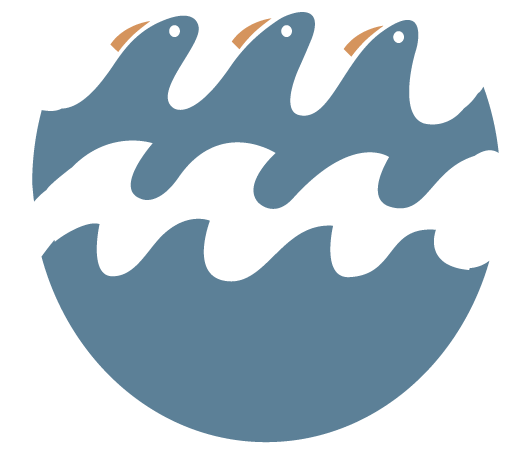Most of the time, my only contact with walleye surfperch is on the business end of a fishing line. Almost everything I know of them has come from books and scientific literature, or hands-on encounters.

In fact, my first-ever TOS post, Explore the Surf Zone, featured the image above. Since then, I’ve written more about the walleye surfperch but I confess, other than seeing a few of them flitting about my shins in the surf, I’ve never seen the free-living version. This close-up image is great for illustrating the basic walleye features – silver body with dark gray bars, purple sheen on the back, up-turned mouth, and big eyes (if you doubt the big eyes trait, see Eyeball to Eyeball), and most importantly for quick field identification, black-tipped pelvic fins. But still…
I am thankful to Gary Longo who helped me fill this gap recently when he sent a couple of short videos of free-living walleyes he took while freediving in Santa Cruz, California, USA. Check out Gary’s cool walleye videos below:
You’ll see a school of walleyes in shallow water beyond the surf zone. Look for black-tipped pelvic fins, an up-turned mouth and big eyes. Notice the great views of kelp too. Images of giant kelp, Macrocystis pyrifera and split kelp, Laminaria setchelli, prevalent in these videos, have appeared in previous TOS posts. The wisdom is, walleyes spend the day along the sandy beaches and at night move onto the reefs, where Milt Love (1996) says they can be the most abundant midwater fish in the kelp beds. Shore-bound types see a few walleyes in the surf zone (see And the King of the Surf is…), but never large numbers and of course we don’t get to see schools in the kelp beds, so I am grateful to Gary for sharing these videos with theoutershores.
Gary is a fellow surfperch fan and a graduate student at UC Santa Cruz in Giacomo Bernardi’s lab. You can read about Giacomo and some other wonderful TOS colleagues in Surfperch Summit. One of the projects Gary is working on is constructing a phylogeny using restriction site associated DNA markers (RADs). The technique involves sequencing short segments of the genome on either side of a restriction site. Closely related taxa will share more restriction sites and the associated flanking sequences (RAD markers) than more distantly related taxa. At least that’s the idea. This is a relatively new technique that should work great for lineages that have split somewhat recently – for surfperches, think 25 million years. The big question is, will surfperches share enough RAD markers in common to make some phylogenetic inference? To learn more about what he’s up to, check out Gary’s website.
If Gary’s video left you wistful and wanting more walleyes, here are links to two more videos worth watching:
References
Love, M. 1996. Probably more than you want to know about the fishes of the Pacific coast. Really Big Press, Santa Barbara, California.

